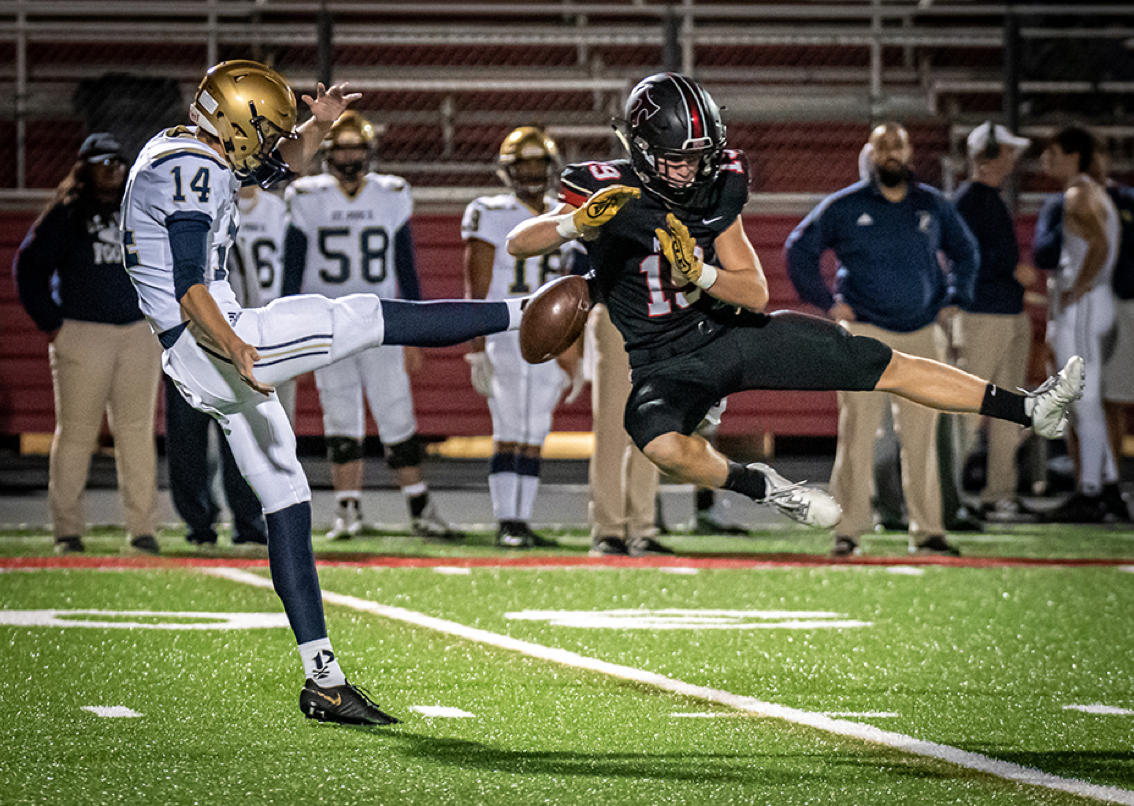Whistle. Break.
Whistle. Break.
The sound of helmets clashing against full pads fills the air until the whistle is blown and it’s time for the next two players’ strength and game-like skills to be put to the test.
This is the sound of the Oklahoma drill in football practice. As of 2015, however, these sounds are rarely heard. Full contact has been heavily reduced in the state of Georgia due to the Georgia High School Association’s new safety standards.
In 2015 the Georgia High School Association implemented new safety standards that limited full-contact practices in the state of Georgia, following years of growing public concern about concussions and chronic traumatic encephalopathy, a neurodegenerative disease that has plagued several NFL players including Mike Webster and Ken Stabler.
Decline in Participation

Across the country, the number of athletes going out for high school football has dropped by 3.5 percent over the past five years. However, the number of players in Georgia has risen by about 20 players per season, and officials are quick to credit the state’s new standards.
“We were concerned that the national numbers were dropping and the numbers come in so slowly to us,” said Tommy Whittle, associate director of the GHSA. “There is a time swing between and we just didn’t want that to develop in Georgia. Football is more of a religion in Georgia than it is in a lot of other states, so we wanted to make the game as safe as we could.”
With the new safety standards, full contact is limited each week during preseason and in-season practices. Limited to 135 minutes per week, coaches in the state of Georgia are required to have a written plan prior to each practice that must be kept on file for 12 months. According to author Chris Whitfield of the Daily Citizen-News, Georgia is the seventh state athletic association to adopt the new standards as of 2015. This includes Alabama, Texas, and Arizona who were some of the first states to implement these rules.
At North Oconee High School, the restrictions were not taken lightly at first or by any high school in Georgia for that matter. With two-a-days gone in the preseason, coaches were concerned for their athletes readiness when it came to game time. Despite the concerns for “game-like tackling”, only positives came from the restrictions placed on the Georgia high school football programs.
Fewer Injuries
Georgia is among the top three states in the U.S. to send high school football players to compete collegiately. According to Julianne Schmidt, associate professor in the kinesiology department at the University of Georgia, Georgia is countering the national trend with fewer orthopedic and head trauma injuries sustained in practice.
“Complexly, you could argue that football is the safest it has ever been with awareness, reduction in the amount of pure exposure and parents’ awareness to concussions,” Schmidt said.
There has been a trickle-down effect from the NFL, to the NCAA, and now to high schools to protect the best interest of their athletes’ future. For the coaches, it has been a learning process especially with the older coaches down in Georgia who aren’t all keen to change.
“I think there was a period of time there where we all had to interpret the rules and figure out exactly what the interpretation of the rules was going to be,” said North Oconee High School athletic director and special teams football coach Michael Dowis. “I know I had a lot of conversations with coaching friends of mine in South Georgia to see if in different regions of the state we were interpreting things the same way.”
When the decline occurred, the GHSA wanted to be proactive in protecting their athletes’ interests which started with a lot of conversation in teaching coaches how to practice all over again. Dowis stated that there were a lot of conversations between him and his staff to interpret the rules and a lot of that involved talking with NCAA football coaches at the University of Georgia who had already dealt with the new rules behind targeting.
Recommendations for Changes
Some states including California, Maryland, and New York have proposed legislation that requires the participant to be 12 years of age before participating in youth football. While even some head coaches including, Michigan coach Jim Harbaugh suggests having kids play soccer until eighth grade to learn footwork and agility to ease trauma to the brain.
The NFL, who eliminated all full-contact practices in season, has led a movement that the Ivy league has taken even farther. Head coach of Dartmouth football, Buddy Teevens, eliminated all full-contact practices in and out of season in 2010 and emphasizes that in his recruiting process.
“We use a robotic tackle device to replicate tackling instead of using our bodies.,” said Dartmouth head football coach Buddy Teevens. “It decreases orthopedic injuries as well. In my 9-1 season, 21 out of my 22 starters practiced and played every week.”
Even 20 years ago, the word “concussion” had no meaning behind it and people did not understand the implications a concussion could have on an athlete for the rest of their lives. Participation numbers have remained to increase or stay stagnant throughout Georgia high school football programs.
“It was the right thing to do by my players,” Teevens said. “There was a concern nationwide about head contact and can you eliminate it and teach the game without the level of contact historically in football. My players experience 4,000 to 10,000 less concussive hits in practice.”
Lindsay Van Houten is a senior majoring in journalism in the Grady College of Journalism and Mass Communication at the University of Georgia and in the Grady Sports Media Certificate.









Show Comments (0)